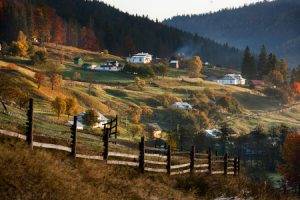 Ann Dudko
Ann Dudko
One of the obstacles to achieving this vision is that we have so little scientific research on addiction recovery within rural and frontier communities. Lacking such guidance, we must rely at the moment on a growing body of experiential knowledge drawn from the heart of rural communities facing this crisis. We need venues to bring professional and lay leaders within these communities together to share their experience, strength, and hope and to share the most effective recovery support strategies. William White, 2016
The Idaho Association of Recovery Community Centers (IARCC) is a consortium of nine recovery centers providing a broad spectrum of recovery support services across the state's 44 counties (37 of which are rural or frontier). Each center operates with 1.5 staff and a larger volunteer workforce (more than 23,000 volunteer hours across the centers in the past year) with an average $140,000 operating budget. Funding of the centers comes from state grants and private local donations. The centers provide service coordination with local health and human service agencies, jail outreach, recovery support groups, recovery-focused classes and workshops for individuals and families, recovery coaching, telephone-based recovery checkups, and sober social events. These centers averaged more than 5,000 visits per center in the fiscal year 2016/2017.
Rural and frontier communities experience unique challenges and opportunities in the delivery of recovery support services to addiction-affected individuals and families (See earlier review). Darrell Keim, Director of the Latah Recovery Center in Moscow, Idaho, recently hosted a focus group for members of the Idaho Association of Recovery Community Centers that represent rural areas to explore these challenges and opportunities. Below are some of the key observations shared during the focus group discussions.
Interestingly, focus group members first noted that challenges faced in the delivery of recovery support services within rural communities are strikingly similar to those faced within many resource-challenged intercity communities.
Factors contributing to drug-related problems in rural Idaho communities include thehollowing-out? of rural areas due to deteriorating economies, increased alcohol consumption and alcohol-focused lifestyles, excessive drug prescribing by physicians not trained in the latest pain relief methods, the intergenerational family clustering of alcohol and other drug (AOD) problems, stigma and shame related to these problems and their heightened social visibility in rural areas, the lack of early AOD problem screening of those served by health and human service organizations, and community leadership denial or minimization of?AOD problems to protect the community's Mayberry image.
The special challenges facing people in rural areas of Idaho who are in need of recovery support include limited to no access to addiction medicine specialists, addiction counseling, or recovery coaching. Formal treatment services are extremely limited in rural Idaho and as a result, the primary recovery support resources include family and friends, a limited number of 12-Step recovery support groups, support through the churches, and service support through generalist state and local human service providers. Transportation is a major service obstacle as the closest hospital or treatment center for many rural citizens is at least an hour's drive. Many in early recovery lack the ability or resources to drive such distances. The formal institution most often viewed as the resource to interrupt cycles of accelerating addiction is the jail. Given these resource limitations, the recovery community centers have become an important new recovery support resource.
The most critical need noted by focus group members is education of key community leaders and the community at large about addiction, addiction treatment, and addiction recovery. The broader needs for treatment resources, sober housing, recovery-conducive employment opportunities, etc. were all viewed as contingent on such an educational process. Key steps include transcending problem denial and minimization, getting beyond thelock?em up? mentality, and embracing the human and cost benefits of recovery support services. The recovery community centers were viewed as having a critical role in this educational process and the larger recovery-focused systems transformation process.
Focus group members noted that rural communities have a strong history of resilience and rich internal assets that can be mobilized to expand recovery supports. Once the importance of broad recovery support is introduced, community buy-in and mobilization can be rapid, particularly if the person leading the local effort is a well-known and trusted community member. The speed of this potential mobilization is enhanced by everyone knowing each other, rural agencies generally working well with one another, and the propensity of people in rural communities to wear multiple hats. Trust is essential and, when that trust is present, most rural communities are willing to step forward and offer their full support of new recovery support initiatives. But again, community leaders and recovery community leaders must have trust in the lead person if any such initiative is to succeed. Such trust has been a key issue in the development of the recovery community centers.
The vision that emerged from the focus group discussions centered on the infusion of recovery support within the very fabric of rural communities, including recovery-oriented support services delivered through a broad network of formal and informal community resources. Idaho's network of recovery community centers was viewed as having a central role in this resource mobilization effort.
As we as a country move forward with the expansion of recovery supports within rural communities, continuing discussions need to occur about what is being learned through this resource development process. And we need forums where those who are pioneering expansion of such supports in rural communities can mutually share these lessons. That process is well underway in Idaho.